 |
| U. S. Route 66 at Fenner Mojave Trails National Monument / Mojave National Preserve. California. December 19, 2016. Copyright © 2017 A. F. Litt, All Rights Reserved www.aflitt.com/MojaveTrailsNM www.aflitt.com/MojaveNP http://rubble.blogspot.com/2017/06/mojave-trails-nm-at-risk.html Route 66 is the boundary here between the National Preserve, run by the National Park Service, on the left, and the National Monument, run by the BLM, on the right. Really, this is a small chunk of private property with a gas station and store just behind me. |
I did not know that Mojave Trails National Monument was here, or even existed, as I drove through on I-40, or I would have explored a bit more and taken some more photos. The monument was too new to appear in my 2017 Rand McNally atlas that I was using for most of my navigation on this trip. Unfortunately, it is also on the Trump Administration's chopping block, so like Bears Ears National Monument, it may have a very short life
Exploring the internet some (nowhere close to as fun as it would have been to have explored the monument itself), there are some pretty cool places here. I'll add some links and photos from others below
From Wikipedia, Mojave Trails National Monument "was designated by President Obama on February 12, 2016 along with Castle Mountains National Monument and Sand to Snow National Monument," and "is under the control of the Bureau of Land Management."
Likewise, I knew nothing of Sand to Snow, another monument run by the BLM, or I could have probably snagged some shots from there, too. From a distance, at least. I did learn about Castle Mountains National Monument while visiting the National Park Service's Mojave National Preserve, but I did not have time to visit that one on this trip. The Park Service manages the Castle Mountains monument, so it's safe, but Sand to Snow is on the chopping block.
Hopefully these places will still be monuments when I return.
Save the Heart of the Mojave Desert from The Wildlands Conservancy on Vimeo.
TAKE ACTION at http://www.wildlandsconservancy.org/monuments.html

From the BLM website:
The Mojave Trails National Monument is a stunning mosaic of rugged mountain ranges, ancient lava flows, and spectacular sand dunes. Protection of this area will preserve its natural, cultural and historic legacy while preserving traditional uses of the area.
The Presidential proclamation that designated the Monument provides latitude for existing uses and activities and does not limit or prohibit rock hunting. Rockhounders are welcome to continue collecting limited amounts of rocks, minerals, and gemstones in the Monument in accordance with the Bureau of Land Management's rock collecting guidelines.
Over the coming months, the Bureau of Land Management will be developing a management plan to help guide the uses and activities that occur in the Monument. We are committed to an open and transparent process with the public as we move forward in developing this plan.
https://www.blm.gov/nlcs_web/sites/ca/st/en/prog/nlcs/Mojave_Trails/recreation.html
From The Wildlands Conservancy:
A vast array of national treasures are protected by the Mojave Trails National Monument. These treasures include:
- A portion of California's largest cactus garden;
- Pisgah Lava Flow—the most researched area in North America for the effects of volcanism on evolution;
- Amboy Crater—a National Natural Landmark;
- Sleeping Beauty Valley—the last intact valley representing the West Mojave plant associations;
- Cady Mountains—one of the best areas in the Mojave to see bighorn sheep;
- Afton Canyon—the Mojave River flows year-round amid colorful canyon walls;
- Marble Mountains Fossil Beds—site of 550 million-year-old fossils of trilobites, which were among the first animals on earth with eyes and skeletons;
- Wildlife and recreational corridors that connect two national parks and 13 wilderness areas—a refuge for campers and explorers, bighorn sheep, desert tortoises, and fringe-toed lizards.
http://www.wildlandsconservancy.org/conservation_mojave.html

From the BLM Website:
Spanning 1.6 million acres, more than 350,000 acres of previously congressionally-designated Wilderness, the Mojave Trails National Monument is comprised of a stunning mosaic of rugged mountain ranges, ancient lava flows, and spectacular sand dunes.
The monument will protect irreplaceable historic resources including ancient Native American trading routes, World War II-era training camps, and the longest remaining undeveloped stretch of Route 66. Additionally, the area has been a focus of study and research for decades, including geological research and ecological studies on the effects of climate change and land management practices on ecological communities and wildlife.
https://www.blm.gov/nlcs_web/sites/ca/st/en/prog/nlcs/Mojave_Trails.html
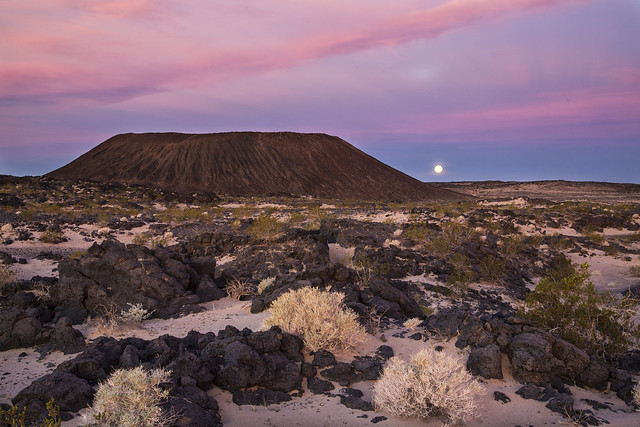
From the Los Angeles Times:
The designation was requested by U.S. Sen. Dianne Feinstein, who for a decade has sought to protect land that wasn't included in the 1994 California Desert Protection Act. That measure covered nearly 7.6 million acres, elevated Death Valley and Joshua Tree to national park status and created the Mojave National Preserve.
Unable to gain momentum on her California Desert Conservation and Recreation Act last year, Feinstein and conservation groups asked Obama to act unilaterally to create the three monuments overlapping biological zones between roughly Palm Springs and the Nevada border.
...
The designations, which do not include funding, were supported by groups including the nonprofit National Parks Conservation Assn., the Sierra Club, Defenders of Wildlife, the Center for Biological Diversity and the Mojave Desert Land Trust.
Much of the land was purchased more than a decade ago by private citizens and the Wildlands Conservancy, then donated to the U.S. Bureau of Land Management in anticipation of its eventually receiving the protection of national monument status.
"This is the pinnacle of a 15-year effort to preserve the physical heart of the Mojave Desert for conservation, recreation and unparalleled inspiration," said David Myers, executive director of the Wildlands Conservancy.
http://www.latimes.com/science/la-me-monuments-20160212-story.html
 |
| CLICK on map to enlarge https://sites.google.com/site/aaronflitt/documents/national-monuments-at-risk/BLM%20California%20MojaveTrailsNationalMonumentMap%20-%202017-06%20b.pdf |
From NASA Earth Observatory:
In February 2016, the United States government established the world’s second-largest desert preserve. In designating three new national monuments in the California desert, the U.S. Department of the Interior added 1.8 million acres to an existing 7.6 million acres of protected land. This image from the Operational Land Imager (OLI) on Landsat 8 shows how they all connect. (The image [See Below] is a composite of satellite data from Landsat 8 passes on February 8 and February 17, 2016.)
https://earthobservatory.nasa.gov/IOTD/view.php?id=87668&src=eoa-iotd
 |
| By NASANASA Earth Observatory image by Jesse Allen, using Landsat data from the U.S. Geological Survey. - http://earthobservatory.nasa.gov/IOTD/view.php?id=87668&src=eoa-iotd, Public Domain, Link |
Preamble to the Presidential Proclamation Establishing Mojave Trails National Monument:
The Mojave Trails area of southern California is a stunning mosaic of rugged mountain ranges, ancient lava flows, and spectacular sand dunes. It is a landscape defined by scarcity and shaped by travel. The area exemplifies the remarkable ecology of the Mojave Desert, where the hearty insistence of life is scratched out from unrelenting heat and dryness. This punishing environment has also forged the unique human history of the area, from ancient settlements uprooted by a changing climate to the armies of General George S. Patton, Jr., as they trained for battle in North Africa. With historic American trading routes, trails followed by Spanish explorers, a transcontinental rail line, and the Nation's most famous highway, the Mojave Trails area tells the American story of exploration, migration, and commerce. The Mojave Trails area is an invaluable treasure and will continue to serve as an irreplaceable national resource for geologists, ecologists, archaeologists, and historians for generations to come.
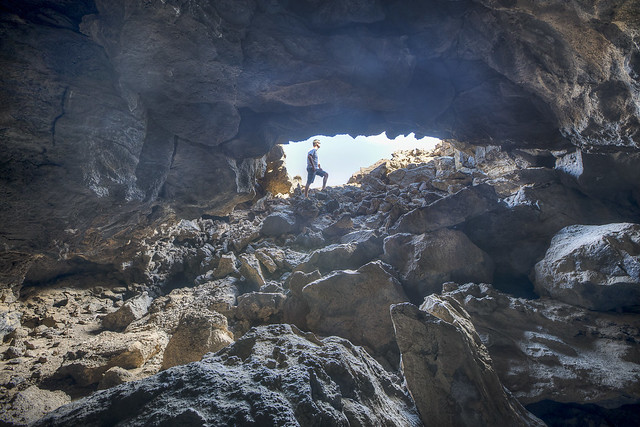
The Mojave Trails area has been a focus of geological research for decades. This unique landscape contains a stunning diversity of lava flows, mountains, playas, sand dunes, bajadas, washes, and other features. The area contains a number of significant sand dune features, most notably the stunning Cadiz Dunes, which have been extensively studied. The mountains of the Mojave Trails area include several significant formations, and seismologists have studied this area for insight into faulting, tectonics, and magmatism. A number of young volcanoes and their associated lava flows in the area have been heavily studied by volcanologists. Amboy Crater, designated as a National Natural Landmark in 1973, has been the focus of research on a number of volcanic phenomena. The Pisgah Volcano lava flow's vast network of lava tubes constitutes southern California's highest density of caves, and is used by both speleologists and recreational cavers. The area's terrain and geology have provided a surrogate for lunar and Martian landscapes, and many of the robotic and imaging technologies used to better understand volcanism and Aeolian processes have been developed and tested in the Mojave Trails area.
Outstanding paleontological resources can be found throughout the Mojave Trails area. The Cady Mountains contain important fossil fauna assemblages dating to the Miocene Period. The Marble Mountain Fossil Bed area contains one of the classic Cambrian trilobite fossil sites in the Western United States. Set in the green-brown lower Cambrian Latham Shale, the fossil beds also contain the fossilized remains of brachiopods, mollusks, echinoderms, and algal bodies that are of great interest to paleontologists. The southern Bristol Mountains contain Tertiary fossils such as camel tracks, invertebrates, and numerous plants; this fossil history has also been used to understand the climate history of the Mojave Desert. Significant vertebrate fossils and other fossil resources have also been identified in Piute Valley and Cadiz Valley as well as the Ship Mountains, Little Piute Mountains, and Sacramento Mountains.

The Mojave Trails area has been important for ecological research, including studies on the effects of climate change and land management practices on ecological communities and wildlife. It provides opportunity for further research on ecological connectivity in the Mojave Desert region, as it is among the most ecologically intact areas in southern California. The species that have managed to thrive here are specialists in perseverance and resourcefulness and are remarkable for their ability to withstand the desert extremes. The area's scarce springs and riparian areas such as Afton Canyon, Chuckwalla Spring, Hummingbird Spring, Barrel Spring, and Fenner Spring provide refuges for a wide variety of plants and animals. The complex network of groundwater underlying the Mojave Trails area has been the subject of past and ongoing hydrological study. Underground aquifers feed springs and seeps that are important for sensitive ecosystems and wildlife, though specific connections are not yet well understood.
Rare plant species such as the scrub lotus, rosy two-tone beardtongue, whitemargin beardtongue, Emory's crucifixion-thorn, small-flowered androstephium, white-margined penstemon, and Borrego milkvetch rely on the specific habitat types found in the Mojave Trails area. The Piute Valley area in the northeastern part of the Mojave Trails area is home to the northernmost occurrences of smoke trees in the California desert, as well as the Homer Mountain Ocotillo Assemblage. The lowlands and middle elevations are also home to other unique or ecologically significant plants such as the endemic Orocopia Mountains spurge. Numerous cactus species are also found here, including the densest concentration of Bigelow cholla cactus in California. Ongoing research in the Mojave Trails area has identified other plant species that are new to science, many of which have not yet been described.

Birds including the endangered Least Bell's vireo, southwestern willow flycatcher, and yellow-billed cuckoo depend on this area, as do raptors such as the burrowing owl, red-tailed hawk, golden eagle, American kestrel, and prairie falcon. Fragile desert fish species such as the bonytail chub rely on the scarce waters of the desert riparian ecosystems. A wide variety of fascinating native mammal species can be found in the Mojave Trails area, including the kit fox, ringtail, American badger, mountain lion, and bighorn sheep. Reptiles and amphibians, including the Mojave Desert's largest lizard, the chuckwalla, have been extensively studied in the Mojave Trails area. The area contains some of the Mojave Desert's best habitat for the threatened desert tortoise and provides important dispersal corridors for that fragile species. An unusual community of invertebrates associated with lava tubes in the Pisgah area offers an ongoing opportunity for entomological research.
Humans have lived in and moved through the Mojave Trails area for more than 10,000 years. The archeological record tells of a human existence shaped by a changing climate. During the Paleo-Indian period, now-dry lakes provided fresh water to small groups of nomadic people and the animals they hunted. From around 7,000 to 2,000 BC, rising temperatures resulted in a change from wet to dry conditions. Associated ecological changes in the region led to new patterns of subsistence for native peoples. Although people remained closely tied to water sources following the temperature increase, desert inhabitants adjusted their diets to rely more heavily on plants and fish, invented new tools, and expanded the sizes of their social groups. During the Formative Period (2,500 to 1,500 BC), dry conditions meant the inhabitants of the Mojave Desert remained in small groups. They relied heavily for their survival on the Mojave River, a name derived from the traditional name for these people, Pipa Aha Macav ("the people by the river"). The Mojave people left their mark on the landscape through petroglyphs, pictographs, old trails, and stone work, some of which can still be found today, especially near springs and rivers and along the shores of now-extinct lakes.

The Mojave were not the only people to use or pass through this landscape. Ancestors of the Chemehuevi Indian Tribe, a branch of the Southern Paiute, have been persistent occupants of the Mojave Desert for thousands of years. Sacred Chemehuevi trails are often tied to traditional and ceremonial songs. The Salt Song Trail, one of the longest song trails of the Chemehuevi people, passes through the Mojave Trails area near the town of Fenner and the Ward Valley. Natural land patterns form the route of this trail, with specific songs sung at specific wayside locations. Other Native Americans who have lived in or passed through the Mojave Desert include the Shoshone, Serrano, Kawaiisu, and the Paiute. The Ward Valley, located between the Old Woman and Piute Mountains, is sacred to a number of these tribes, as are the Mesquite and Crucero Hills, which contain over 50 archaeological sites including petroglyphs, milling stations, temporary camps, intaglios, lithic scatters, and pottery dating as far back as 4,000 years.
The Mojave Trails area has been a critical travel corridor for millennia, linking the Pacific Coast to the deserts of the southwest and beyond. The Mojave Indian Trail is the earliest known travel route passing through the Mojave Trails area, used by Native Americans for thousands of years and by early Spanish explorers and traders. In 1829, Mexican explorer Antonio Armijo pioneered the Old Spanish Trail through this area. Evidence of the trail, now designated a National Historic Trail, can still be found at Afton Canyon.
By the end of the 19th century, transcontinental rail travel had changed the American West in profound ways. In 1882, Southern Pacific constructed a railroad route from Barstow to Needles. In addition to the major rail stops established at Needles and Barstow, several smaller towns and rail stops were established along this stretch, including the alphabetically named Amboy, Bristol, Cadiz, Danby, Essex, Fenner, and Goffs. These towns remain, some as inhabited hamlets and others as abandoned ghost towns, and some historical artifacts from the original rail line still exist, including original rail ties and track and later improvements of communications poles, insulators, and wires.
A modest dirt road -- an original trackside component of the railroad project -- would later become the most famous highway in America. In 1911, in the infancy of the automobile era, the County of San Bernardino paved the first stretch of that road from Barstow to Needles. The next year, this stretch became part of the National Old Trails Road, which extended more than 3,000 miles from New York, New York, to Los Angeles, California, and connected the American coasts by pavement for the first time. In 1926, the road was officially designated as U.S. Highway 66, a designation soon known around the world as Route 66. During the 1930s, Route 66 became an important route for migrants escaping economic hardships of the Great Depression and droughts in the Central plains. As the national economy rebounded following World War II, Americans took to the highways in unprecedented numbers. The road became an American icon, earning the nickname the "Main Street of America" and inspiring popular culture through music, literature, and film.
The popularity of Route 66, however, hastened its downfall; increasing traffic quickly exceeded its two-lane capacity. In 1985, Route 66 was officially decommissioned, leaving behind a powerful albeit fragmented narrative history of America's automobile culture of the first half of the 20th century and its legacy of related commerce and architecture. The Mojave Trails area contains the longest remaining undeveloped stretch of Route 66, offering spectacular and serene desert vistas and a glimpse into what travelers experienced during the peak of the route's popularity in the mid-20th century. Today, the ghost towns along this stretch of Route 66 are a visual legacy of how the automobile shaped the American landscape.
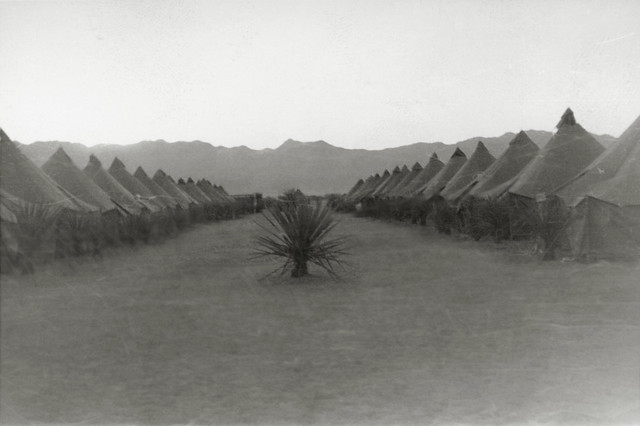
In addition to its important role in the transportation history of the United States, the Mojave Trails area is a unique resource for understanding one of the most formative periods in American military history. During the height of World War II, the United States military recognized a need to develop a desert training program in order to prepare its troops to fight the tank armies of Nazi Germany in North Africa. Major General George S. Patton, Jr., commander of the I Armored Corps, selected the site of the Desert Training Center in the Mojave Trails area, the largest training area in the world at the time. More than one million troops trained in the area between 1942 and 1944, including at Camp Ibis, Camp Clipper, Camp Iron Mountain, Camp Granite, and Camp Essex. Remnants of these camps can still be found today, including rock-lined streets, staging areas, flag circles, altars, tent areas, and even tank tracks on some of the area's hardpan playas.
https://obamawhitehouse.archives.gov/the-press-office/2016/02/12/presidential-proclamation-establishment-mojave-trails-national-monument
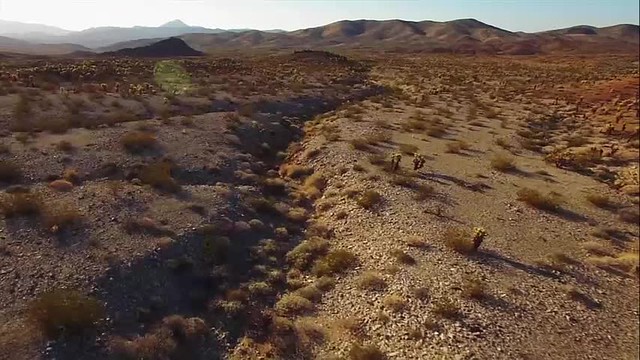
BLM: Mojave Trails National Monument Map (as of June 2017) - PDF
https://sites.google.com/site/aaronflitt/documents/national-monuments-at-risk/BLM%20California%20MojaveTrailsNationalMonumentMap%20-%202017-06%20a.pdf
To comment on the monument review process (due July 10, 2017):
To comment on the monument review process (due July 10, 2017):
Video (By Others...)
Save the Heart of the Mojave Desert from The Wildlands Conservancy on Vimeo.
TAKE ACTION at http://www.wildlandsconservancy.org/monuments.html
Links
BLM:
Website:
https://www.blm.gov/nlcs_web/sites/ca/st/en/prog/nlcs/Mojave_Trails.html
Map: https://www.blm.gov/nlcs_web/sites/style/medialib/blm/ca/nlcs/mojavetrails/maps.Par.25104.File.dat/mojavetrails_20160129.pdf
flikr:
https://www.flickr.com/photos/mypubliclands/albums/72157663936032779
The White House:
Presidential Proclamation -- Establishment of the Mojave Trails National Monument
https://obamawhitehouse.archives.gov/the-press-office/2016/02/12/presidential-proclamation-establishment-mojave-trails-national-monument
https://obamawhitehouse.archives.gov/the-press-office/2016/02/12/presidential-proclamation-establishment-mojave-trails-national-monument
https://obamawhitehouse.archives.gov/the-press-office/2016/02/12/fact-sheet-president-obama-designate-new-national-monuments-california
Wikipedia:
https://en.wikipedia.org/wiki/Mojave_Trails_National_Monument
The Wildlands Conservancy:
Sand to Snow National Monument
Map (This is very cool!)
Video
https://vimeo.com/thewildlandsconservancy/mojavetrails
LA Times: Volcanic spires and Joshua trees: Obama protects 1.8 million acres in California's desert
http://www.latimes.com/science/la-me-monuments-20160212-story.html
Washington Post: With 3 new monuments, Obama creates world’s second-largest desert preserve
National Monuments in Danger:
To comment on the monument review process (due July 10, 2017):
To comment on the monument review process (due July 10, 2017):

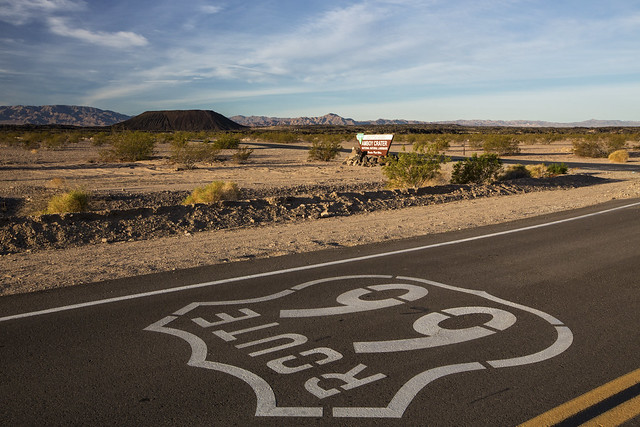
No comments:
Post a Comment